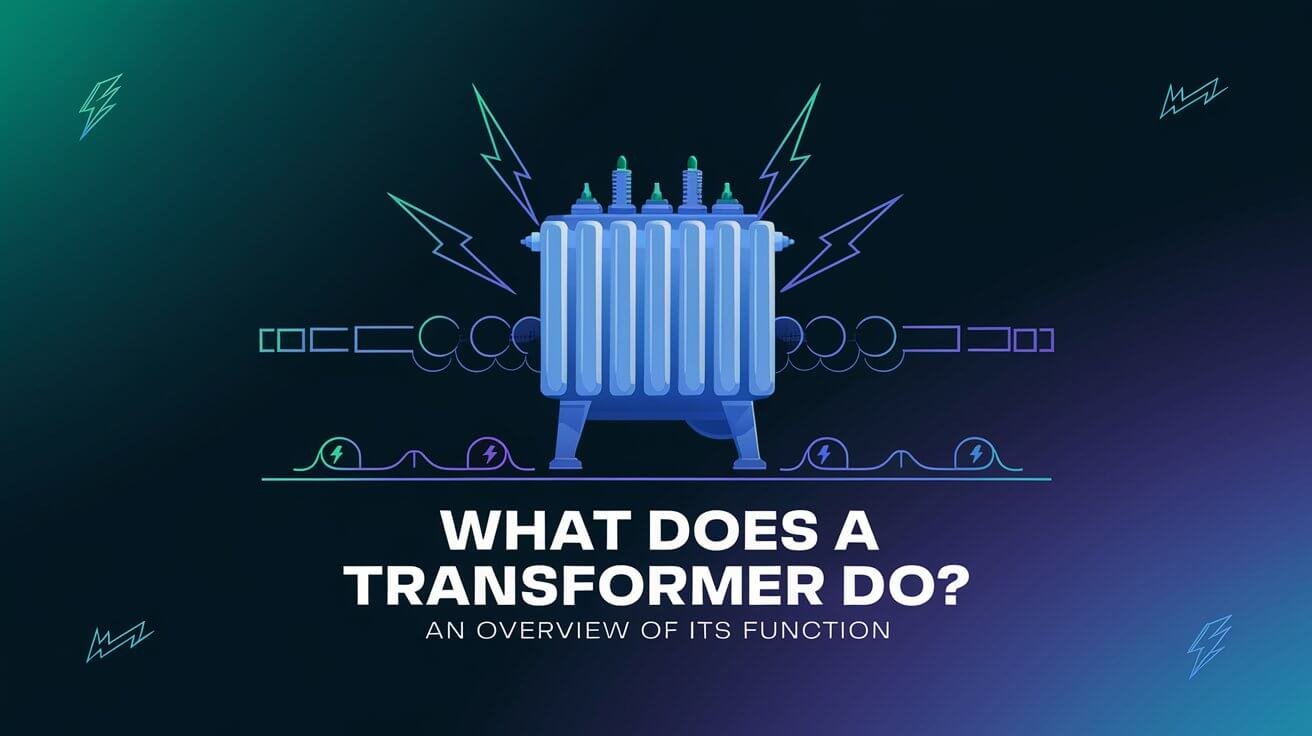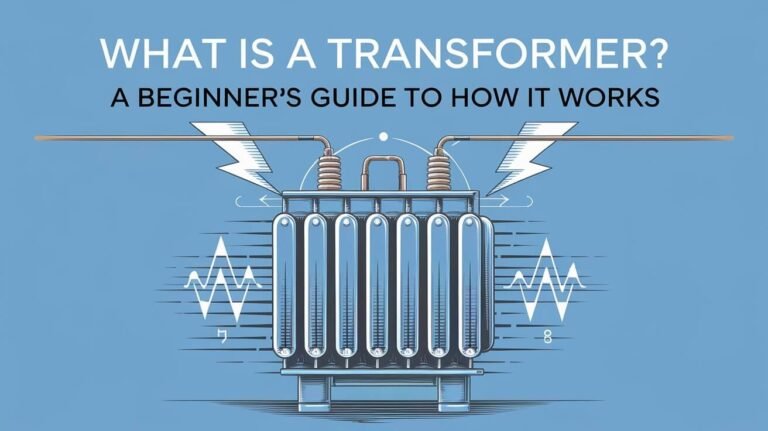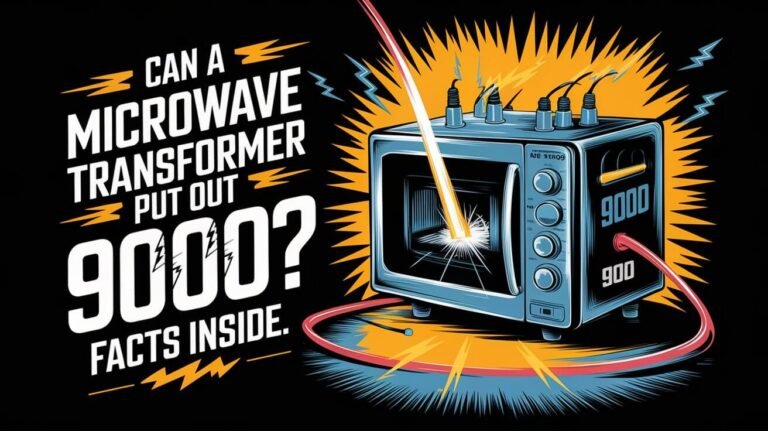
Transformers are key devices that change the electrical transformation of input voltage to a different output voltage. They are vital in many areas. The main transformer function is to adjust voltage levels, making electricity safe and useful for various needs.
From powering home appliances to supporting big industrial operations, transformers are essential. They have a long history, starting in 1836. For over 188 years, they’ve been a cornerstone of the power industry.
In the United States, transformers are critical for handling alternating current electric power. They adjust voltage levels to ensure electricity is delivered efficiently and safely. This makes them vital for our daily lives and the functioning of our modern world.
Basic Principles of Electrical Transformation
Transformers work by using electromagnetic induction. This lets them move electrical energy between circuits. They have primary and secondary coils wrapped around an iron core. This setup changes voltage levels.
The primary coil gets the input current. The secondary coil sends out the output. The iron core helps move energy between them.
Understanding electromagnetic induction is key to knowing how transformers function. When current flows through the primary coil, it creates a magnetic field. This field induces a voltage in the secondary coil.
The number of turns on each coil affects the voltage change. The secondary voltage depends on the primary voltage, turns on the primary, and turns on the secondary.
Electromagnetic Induction Process
The electromagnetic induction process is based on a changing magnetic field causing an electromotive force (EMF) in a coil. This is vital for transformer operation. It allows energy to move efficiently between coils.
The iron core helps in this energy transfer. The primary and secondary coils are essential for this process.
Primary and Secondary Coil Functions
The primary and secondary coils are vital in a transformer. The primary coil gets the input voltage. The secondary coil produces the output voltage.
The number of turns on each coil affects the voltage change. This is how transformers can change voltage levels.
Voltage Modification Fundamentals
Voltage modification is a key part of transformer operation. The primary and secondary coils play a big role. The number of turns on each coil determines the output voltage.
This principle is important for understanding how transformers can change voltage levels. They are essential in power systems for stepping up or stepping down voltages.
Core Components of a Transformer
Transformers have several key parts that work together. These include the core, windings, insulation, and cooling system. The core is usually made of thin steel sheets. These sheets are separated by insulating materials to reduce losses.
Important parts are the primary and secondary windings, made of copper or aluminum wire. The number of turns in each coil changes the voltage. Insulation like cellulose, oil, and synthetic materials protect the windings and core. The transformer tanks are made of steel or aluminum for strength and to help cool the transformer.
Bushings and tap changers are also key. Bushings connect the terminals to the windings, and tap changers adjust the output voltage. Here’s a table showing some main components and their roles:
| Component | Function |
|---|---|
| Core | Minimizes losses and facilitates magnetic flux |
| Windings | Transforms voltage levels |
| Insulation | Protects windings and core from damage |
| Cooling System | Regulates temperature and prevents overheating |
Knowing the core components of a transformer is key. It helps us understand its role in power systems. By learning about the core, windings, insulation, and cooling system, we see how complex and vital these devices are in our lives.
Types of Transformers in Power Systems
Transformers are key in power systems, helping to reduce energy loss over long distances. They come in different types, like step-up, step-down, distribution, and isolation transformers. These are vital for delivering electricity safely and efficiently from power plants to homes and businesses.
Step-up and step-down transformers change voltage levels. Distribution transformers handle voltages from 230 V to 11 kV. Power transformers, on the other hand, have voltages between 33 kV and 400 kV. You can find them rated at 400 kV, 200 kV, 110 kV, 66 kV, and 33 kV.
Transformer Functions
Transformers have at least two windings: primary and secondary. The primary winding gets the input voltage, and the secondary winding sends out the voltage. Tap changers adjust the output voltage by changing the winding turns. Bushings, which are insulators, connect the transformer windings to the electrical network.
Transformer Applications
Transformers are used in many areas, like power transmission and distribution. They’re also found in industries and commercial places, like data centers and hospitals. Each type of transformer is made for specific needs, like certain voltage levels, power ratings, and insulation standards.
What Does a Transformer Do in Everyday Applications
Transformers are key in our daily lives. They help use different voltages for various devices and appliances. From small electronics to big industrial machines, transformers are everywhere.
At home, they make it safe to use high-voltage electricity. This is true for things like refrigerators and air conditioners. They step down the voltage so it’s safe for us.
In factories, transformers power big machines like motors and pumps. They also help in power systems to cut down energy loss. This makes them a must-have for modern life, helping us use electricity efficiently and safely.
Here are some examples of how transformers are used every day:
- Powering household appliances, such as refrigerators and air conditioners
- Charging electronic devices, such as smartphones and laptops
- Supporting large-scale industrial processes, such as manufacturing and construction
- Providing power for transportation systems, such as trains and buses
| Transformer Type | Voltage Range | Application |
|---|---|---|
| Iron core transformers | 600-5000 volts | Industrial and scientific settings |
| Toroidal core transformers | 120-240 volts | Household appliances and electronics |
| High-voltage transformers | 300,000 volts | Power transmission and distribution systems |
Transformers are vital in our daily lives. Their use has made them a key part of modern technology.
Power Distribution Networks and Transformer Roles
Transformers are key in power distribution networks. They help move electrical energy from power plants to users. The process involves combining different power sources, adjusting voltage, and spreading the load across the grid.
Transformers are essential for changing voltage levels. This is vital for efficient and safe power transmission. They also help manage the load, preventing overloads and outages.
Some important roles of transformers include:
- Grid integration: Transformers help combine various power sources into the grid, making energy transmission efficient.
- Voltage regulation: They adjust voltage levels, ensuring power is transmitted and distributed correctly.
- Load management: Transformers manage the load, preventing overloads and outages.
| Transformer Type | Function |
|---|---|
| Step-up Transformers | Increase voltage for long-distance transmission |
| Step-down Transformers | Decrease voltage for distribution to end-users |
Transformer Efficiency and Energy Loss
Transformer efficiency is key in power systems, affecting energy use and costs. Losses in transformers come from core and copper losses. Modern designs aim to cut these losses and boost efficiency.
Some stats show why transformer efficiency matters. For example, a transformer at 80C uses 13-21% less energy than one at 150C. High-efficiency, copper-wound 80C transformers save $1,660-$3,150 a year over standard 150C units.
Efficient transformers bring many benefits. They:
- Use less energy and cost less
- Are more reliable and run longer
- Have lower temperatures, lasting longer
- Can handle more loads without losing lifespan
To get high efficiency, focus on core, copper, and stray losses. Using materials like cold-rolled grain-oriented silicon steel helps. Design optimization also plays a big role in reducing losses and increasing efficiency.
| Transformer Type | Temperature Rise | Energy Savings |
|---|---|---|
| Copper-wound 80C rise | 80C | 13-21% less operating energy |
| Standard 150C rise | 150C | Higher energy consumption |
Understanding what affects transformer efficiency helps us build better power systems. This leads to less energy waste and supports sustainable energy.
Safety Features and Protection Systems
Transformer safety is key to avoiding damage and ensuring they work well. Protection systems are vital for spotting internal faults and stopping overheating and over-fluxing. These safety features, like cooling systems and circuit breakers, help keep the power supply safe and reliable.
Important protection systems include overcurrent protection, which uses fusible links, fuses, and circuit breakers. Overheating protection systems also prevent damage from too much heat. Buchholz gas detection relay systems detect gas from internal faults, triggering alarms and trips to avoid serious damage.
Companies like AX Control Inc. offer reliable protection systems for transformers. Their motor management systems are for industrial use. By using these systems, utilities and industries can keep their transformers safe and running well, reducing the chance of power outages and damage.
| Protection System | Description |
|---|---|
| Overcurrent Protection | Prevents transformer overload or short circuits |
| Overheating Protection | Prevents damage caused by excessive temperatures |
| Buchholz Gas Detection Relay | Detects gas bubbles produced from internal faults in transformer tanks |
Understanding the importance of transformer safety and protection systems is vital. Utilities and industries can take steps to ensure their equipment works reliably. This is critical with the growing need for electricity and the need for a stable power supply.
Common Problems and Solutions
Transformers can face issues due to age, mechanical damage, or electrical problems. Knowing these problems and their causes is key to fixing them. Regular checks and upkeep can stop problems like overheating, insulation breakdown, and oil leaks.
Some common transformer problems include:
- Overheating, which can lead to insulation degradation and aging
- Insulation deterioration, resulting from thermal stress and environmental conditions
- High moisture levels, which can cause reduced dielectric strength and accelerated aging
- Corrosion, impacting transformer tank and core, and affecting their operational efficiency and lifespan
- Overloading, leading to overheating and insulation degradation
To solve these issues, it’s important to take preventive steps. This includes monitoring temperatures, managing loads, ensuring good ventilation, and keeping cooling systems in check. Regular maintenance, oil tests, and temperature control can also prevent insulation and moisture problems.
| Transformer Failure Cause | Frequency | Description |
|---|---|---|
| Overheating | 30% | Insulation degradation and aging |
| Insulation deterioration | 25% | Thermal stress and environmental conditions |
| High moisture levels | 20% | Reduced dielectric strength and accelerated aging |
| Corrosion | 15% | Transformer tank and core damage |
| Overloading | 10% | Heating and insulation degradation |
Understanding common transformer problems and taking preventive steps can help troubleshoot them. Regular maintenance and monitoring are key to keeping transformers running well and safely. This ensures the reliability and safety of electrical systems.
Endnote
Transformers are key to our modern electrical systems. They help move power over long distances efficiently. Michael Faraday coined the term “transformer” in 1831. These devices are now essential for the transformer importance and future of electrical transformation.
Transformers power our homes and businesses. They also drive the complex electronics we use every day. As we move forward, transformers will play an even bigger role. They will help us use new energy sources and keep our grids running smoothly.
Transformers do many important jobs. They change voltages, control power flow, and keep our systems safe. As technology improves, we’ll see new transformer designs. These will make our electrical systems more efficient and sustainable.
Customer FAQs
What is the main function of a transformer?
Transformers are key in electrical systems. They change voltage to make electricity safe for use. This is true for both household appliances and big industrial operations.
How do transformers work based on the principles of electrical transformation?
Transformers use electromagnetic induction to change voltage levels. The primary and secondary coils work together. This makes electricity safe and efficient for use.
What are the key components that make up a transformer?
A transformer has a core, primary coil, secondary coil, and cooling system. These parts work together. They help change electricity for distribution.
What are the different types of transformers used in power systems?
Power systems use many transformer types. There are step-up, step-down, distribution, and isolation transformers. Each has a special role in delivering electricity safely and efficiently.
How do transformers enable the use of different voltages for various devices and appliances?
Transformers make it possible to use different voltages for many devices. This includes everything from low-voltage electronics to high-power machinery. It makes electricity accessible for our daily needs.
What are the key roles of transformers in power distribution networks?
Transformers are essential in power distribution networks. They help integrate the grid, regulate voltage, and manage loads. This ensures the electrical grid works well.
What factors contribute to the efficiency of transformers, and how do modern designs address energy losses?
Efficiency in transformers comes from core and copper losses. Modern designs use new materials and techniques. This reduces energy loss and promotes sustainable power.
What safety features and protection systems are used in transformers?
Transformers have important safety features. These include cooling systems, circuit breakers, and monitoring tools. They prevent overheating and electrical faults, ensuring safe power delivery.
What are some common problems that can affect transformers, and how can they be addressed?
Transformers can face problems like overheating and insulation breakdown. These issues can be fixed with proper maintenance and troubleshooting. This keeps transformers working well and lasting longer.




